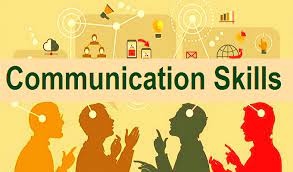How Your Communication Style Affects Your Sales Performance
reating a profitable business, and making sales, is all about good communication. Without proper communication, no deals would ever be accomplished.
Success in sales starts long before a salesperson interacts with a customer. The way a sales team interacts and strategizes makes all the difference. Understanding how you and your team communicate with others will lead to better business and more clients. You and your sales team can always benefit from learning tools and strategies to work through sales communication roadblocks.
When it does come to interacting with potential clients, communication continues to be of paramount importance. The only way to have more prospects, and earn more commission dollars, is to create relationships through connections and conversations.
Understanding potential clients, finding common ground with colleagues or negotiating numbers to meet the bottom line can all be challenging. Ensuring everyone is on board, and there is no miscommunication saves time and money.
Thankfully, learning to communicate with others is easier than you might think. The first step is understanding the five basic communication styles.
5 common communication styles
There are five basic communication styles that are used in both verbal and written communication. You must first understand your personal style to improve your communication with your team and potential clients. This understanding is essential to clear communication and can ensure that your message is understood rather than misinterpreted.

1. Aggressive style
Aggressive communicators are not afraid to share their opinions and often do so in a loud manner. They can be dominant and come off as hostile to anyone that does not agree with them. Aggressive communicators struggle to listen effectively to others.
Sales representatives must be able to listen because listening builds trust. If you are struggling to listen, become curious. When you are curious about someone, or something, listening becomes automatic.
Another way to improve your listening is by learning to ask good questions. Good questions display curiosity. Remember, stay away from yes or no questions. Instead, focus on asking open-ended questions to get your clients thinking and explaining their needs and pain points.
2. Passive-aggressive style
Passive-aggressive communicators tend to agree with others and follow the group. They do not share their opinions with others, even when in opposition, leading to passive-aggressive communication.
If you catch yourself communicating passive-aggressively, remember integrity. A sales professional known for high integrity in the long term will outperform the competition, hands down. Sharing your opinions may feel threatening or scary, but everyone appreciates an honest person.
In today’s world, integrity is becoming scarce and, sadly, one of the most important characteristics of a successful sales professional. However, when you are authentic, others know who you are and will depend on you when it really matters.
3. Submissive style
Submissive communicators avoid conflict. They often feel that other people’s opinions and ideas are valid and that their own are not. This style is tied to a victim mentality which makes effective communication difficult.
Those who communicate submissively are closed off, and it shows. Pay attention to your own body language and ensure you are open, curious, ready to help and actively listening. If you catch yourself sending signs of submission, lean into the discomfort. Open your arms, uncross your legs and make eye contact.
4. Manipulative style
Manipulative communicators are highly skilled at getting what they want at all costs. They often let ethics slide and will do anything to have an advantage over others. While manipulative communicators might get a lot of sales, they will not get returning customers.
Manipulative communicators can benefit from practicing empathy. This involves seeing a topic from your client or team member’s perspective and analyzing how you would react in the same situation. Perspective in problem-solving and troubleshooting makes all of the difference. Never assume you know what anyone else is going through. Be empathetic to the situations of others.
5. Assertive style
Assertive communicators are seen as the most effective communicators. They can clearly communicate their opinions and ideas while maintaining a polite and courteous manner. They speak directly and honestly in all situations. They practice the integrity, empathy, listening skills and open body language, often lacking in the other communication styles above.
Recognizing your personal communication style
While we can’t always know potential clients’ communication styles, we can familiarize ourselves with our own. This allows us to see how we truly connect and communicate with the world. This takes patience and, to be honest, complete authenticity.
Authenticity can be challenging. We don’t always see ourselves as we are. We like to imagine we are the best version of ourselves, so an honest assessment of our communication style is necessary.
Once you’ve honestly determined your communication style, you will be ready to understand how to navigate conversations with those using all the different styles. You will also notice that it’s common to use a mix of communication styles depending on the situation and audience.
Communication is not magic or rocket science. It all starts with self-awareness.
Source: entrepreneur.com




